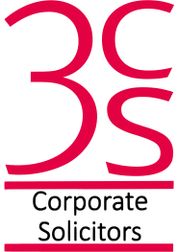What are the financial obligations of taking on a Commercial Lease?
Generally, when acquiring a property the purchaser pays the purchase price by reference to market value. In most cases when entering into a Commercial Lease, the tenant is granted exclusive use of the property (premises) for an agreed period (“the term”) in return for payment of an agreed rental, service charge and outgoings.
1. Rental
The valuation of rental in a Commercial Lease is calculated by reference to property location and condition, size, any comparable values of lettings of similar neighbouring properties, frontage at street level (if retail), services benefitting the property and length of the term.
The Heads of Terms will detail the rent either as a fixed amount or as an amount payable per square foot of the premises that you wish to occupy depending on floor area. In most cases, a landlord will be willing to grant a rent-free period to the tenant at the outset of the term (and sometimes later on in the term of the Lease) as an incentive to enter into the Lease.
A UK landlord will be very keen to ensure full and commercial occupation of its commercial property assets by granting leases on what is called “full repairing institutional terms”.
2. Service Charge
A commercial leasehold property will generally include a separate obligation from the tenant (and all other occupying tenants) to contribute towards the maintenance of the structure of the whole of the building through the payment of a fair proportion of service charge. This is normally calculated based on the square footage in the premises in proportion to the building as a whole.
Market conditions will determine the level of rent and service charge that will be payable by the tenant. The well-advised tenant will request a service charge cap beyond which the service charge will not increase.
3. Outgoings
A Lease will generally include an obligation for a tenant to pay all outgoings in respect of the premises. This will include business rates, the supply of utilities - where these are not included in the service charge above - and the contribution of a due proportion towards the insurance of the building.
What are the other main considerations?
1. Rent Reviews
The rent review clause will normally operate to revise the rent to the higher of the existing rent and the open market rental of the premises on the review date, and may also take into account certain other assumptions. Alternatively, it may be reviewed by reference to the consumer price index (or other relevant indexes) on an inflationary basis over the term of the Lease (inflationary review). The frequency of review will be agreed upon by the parties in the Heads of Terms.
A UK landlord will always seek to arrange a rent review that does not reduce the property’s existing rent regardless of the market value on the rent review date. It is this ability to lock in and potentially increase rental value at rent review that makes UK commercial real estate an attractive income-generating asset for landlords.
If the landlord has given the tenant a long rent-free period at the beginning of the Lease, the rent review will not assume a rent-free period on the review date meaning the tenant will pay at the highest possible rate for the remainder of the Lease term without the benefit of a rent-free period following review.
2. Tax
There are two principal tax considerations on the grant of a Lease:
(i) Value Added Tax (VAT)
(ii) Stamp Duty Land Tax (SDLT)
VAT (currently chargeable at 20%)
If it wishes to charge VAT on the rental, the landlord must make a VAT Election confirming that the property is to be subject to VAT and register this with HM Revenue & Customs (HMRC). It must then obtain an acknowledgement of that submission from HMRC. The landlord cannot raise VAT invoices on the rental and other monies that fall due under the Lease unless it has followed this procedure.
SDLT
SDLT is chargeable on the aggregate rental value calculated over the term of the Lease at the date the Lease is entered into. No SDLT is payable if the rental value over the Lease term is less than £150,000.
3. Capital Contributions
Landlords, especially on a new development, may be willing to make a Capital Contribution to the tenant. In essence, the landlord will pay to the tenant an amount to assist with the fit-out of the Premises, such as a contribution towards the installation of carpets and floor boxes for the tenant’s fit-out. The landlord will retain the right to claim capital allowances in respect of any such contribution. A well-advised tenant should always check whether such contributions will be available before signing up for a new lease of commercial premises.
If you require tax advice on any of the points raised in this article please let us know and we can recommend an accountant who can provide you with advice.
In our third and final article in this series, we will focus on the rights of a Tenant to deal or sell on the Property to third parties and terms dealing with the early exit by the Tenant from the Lease.






















